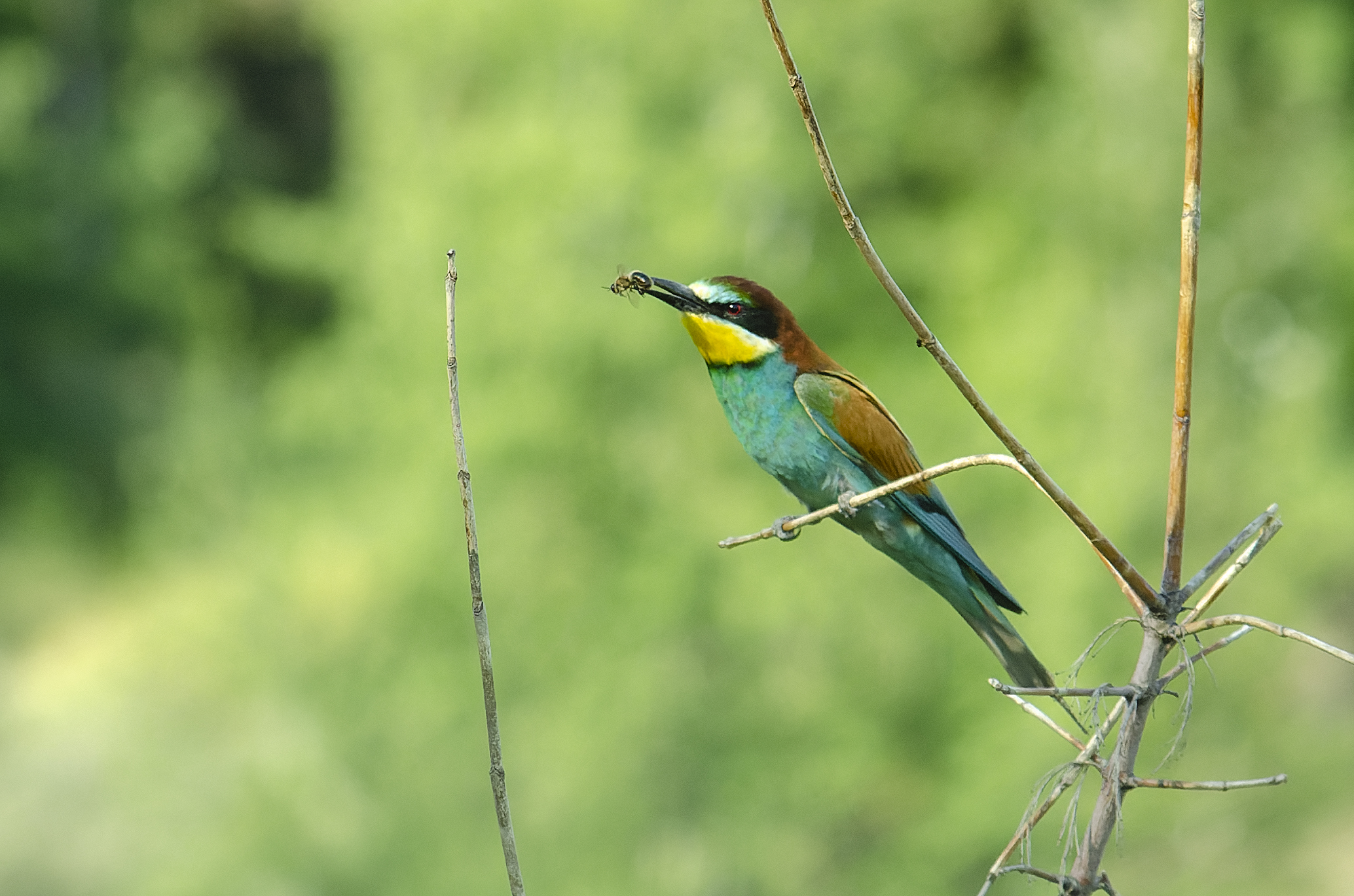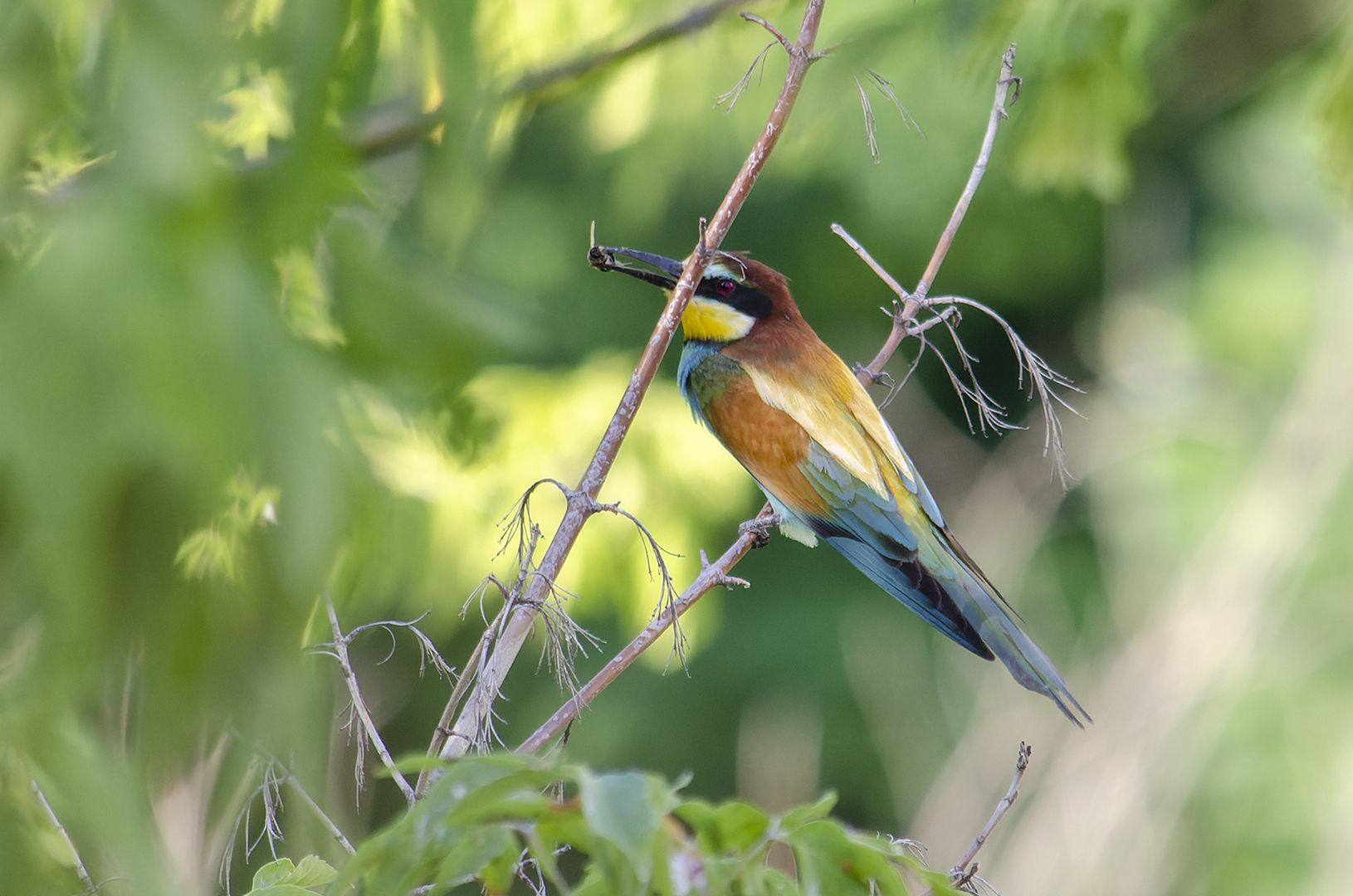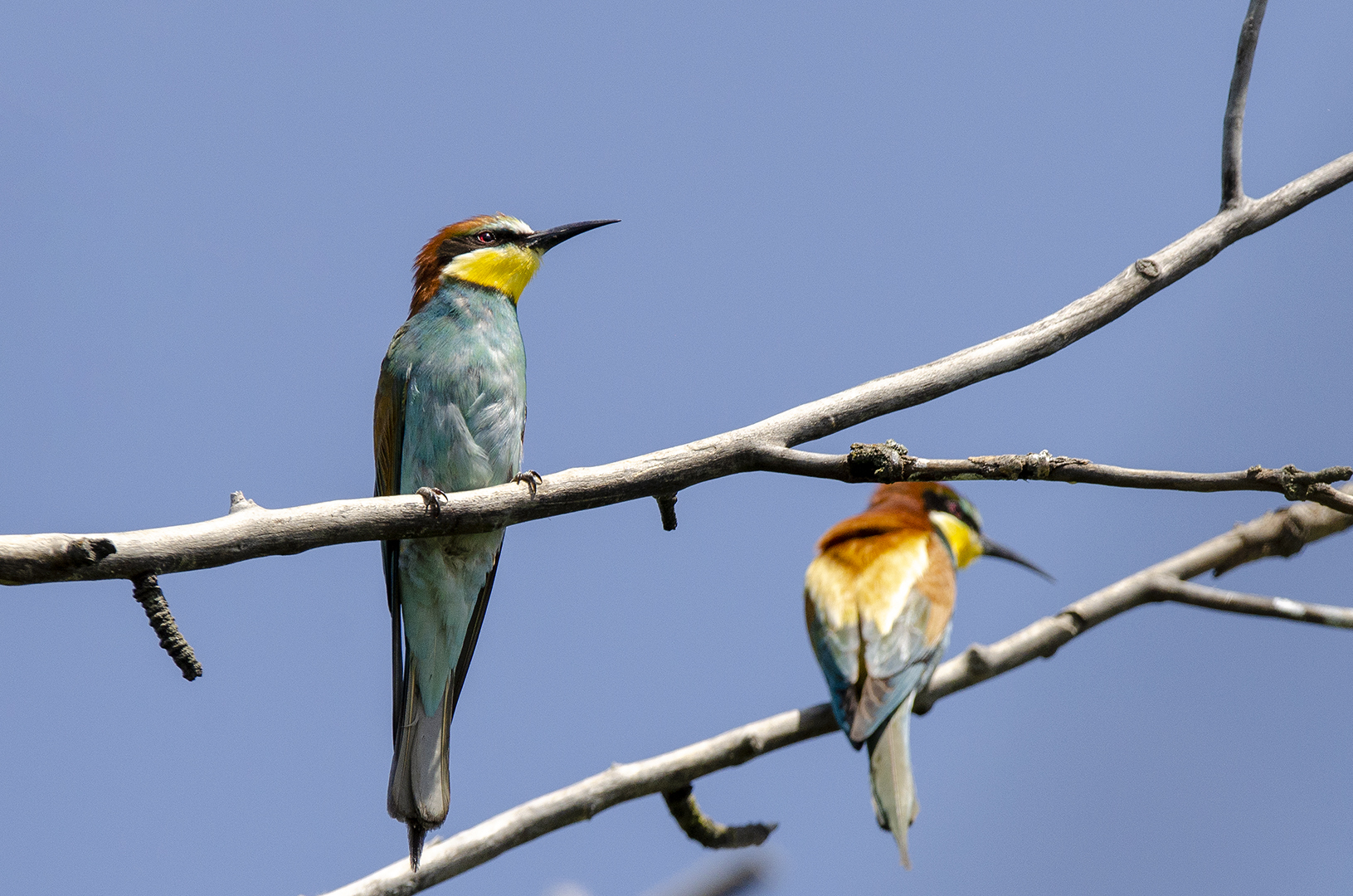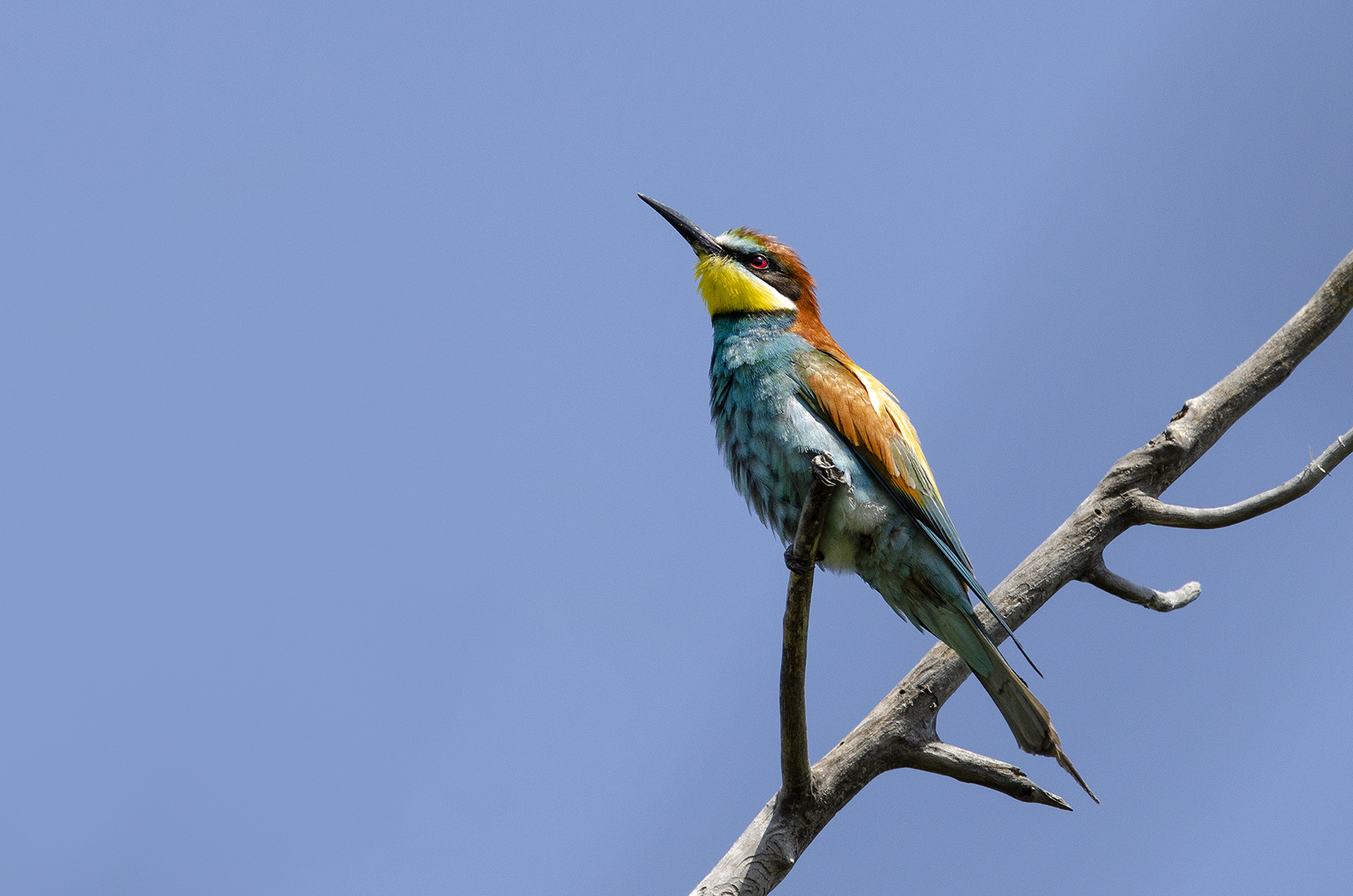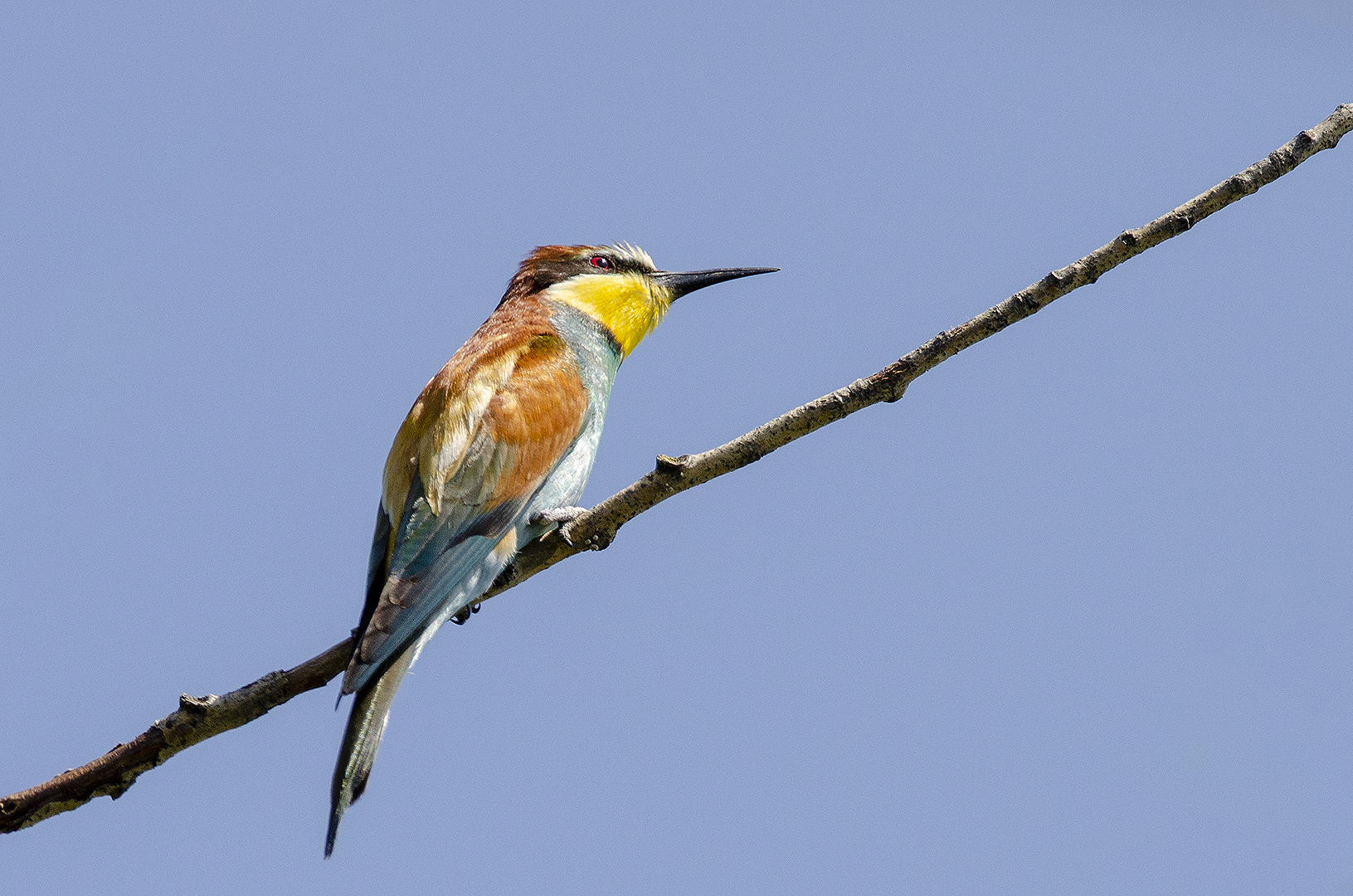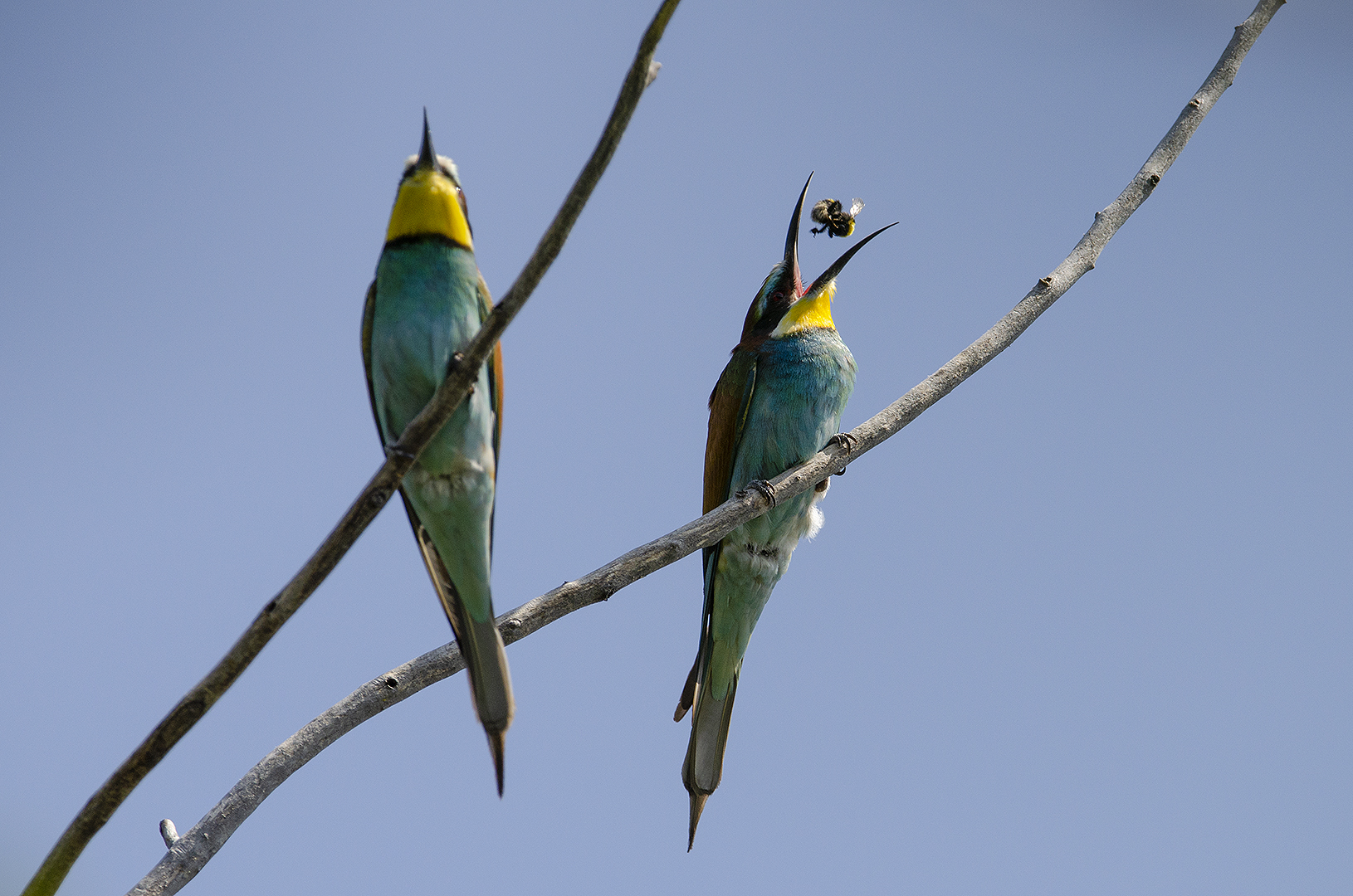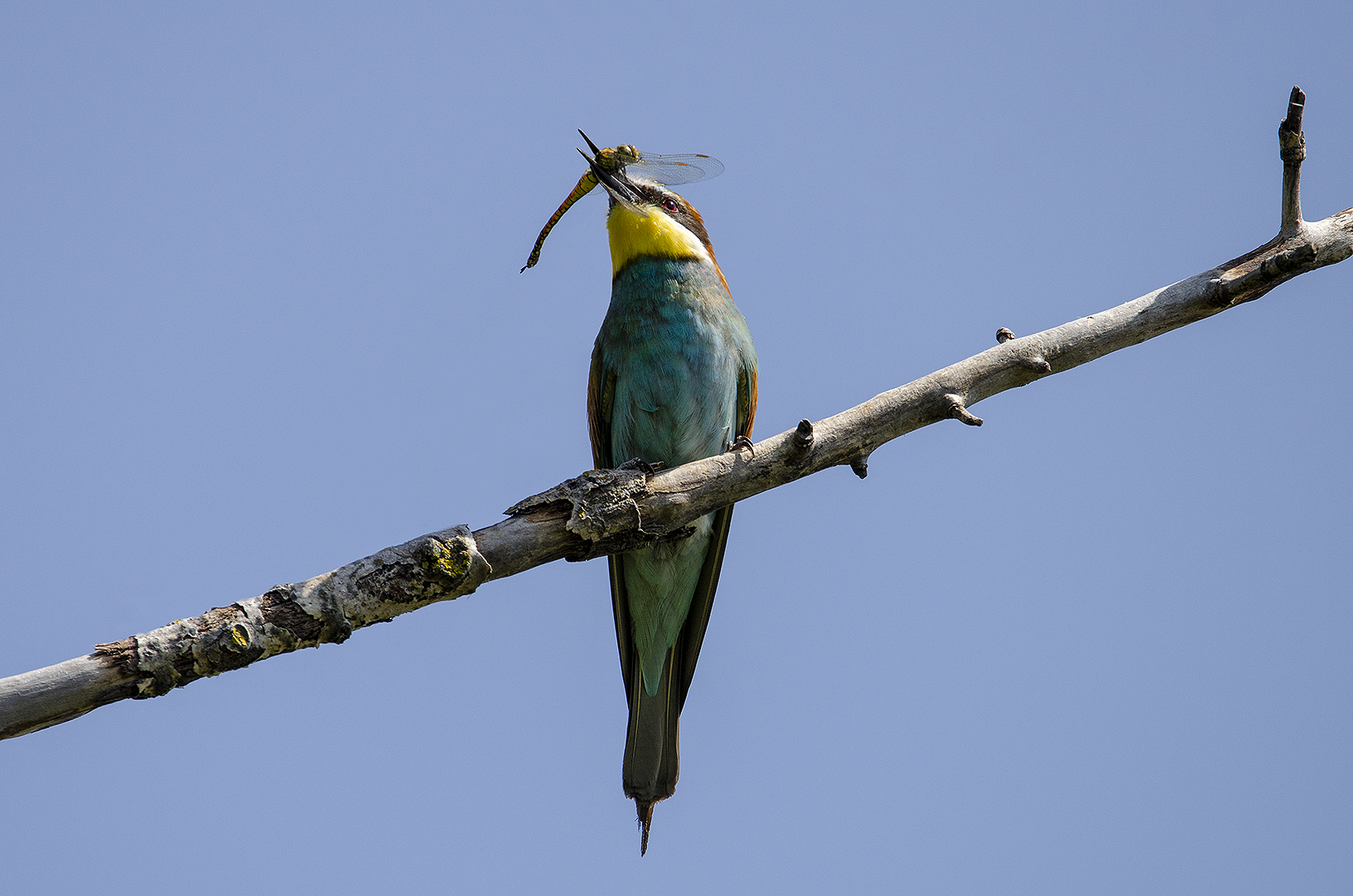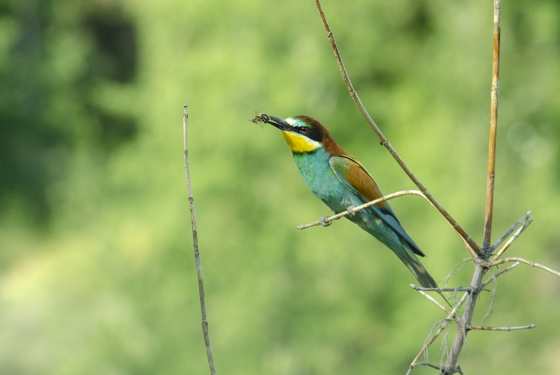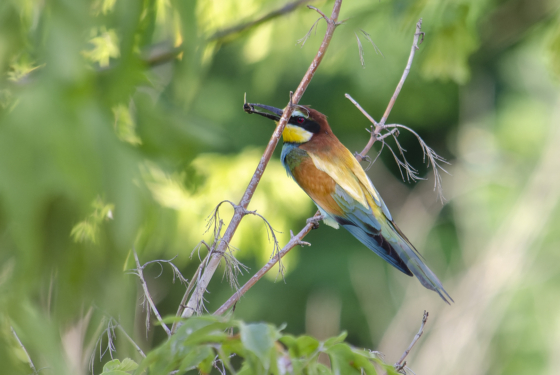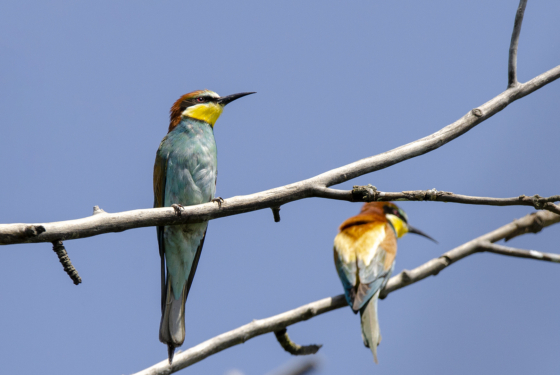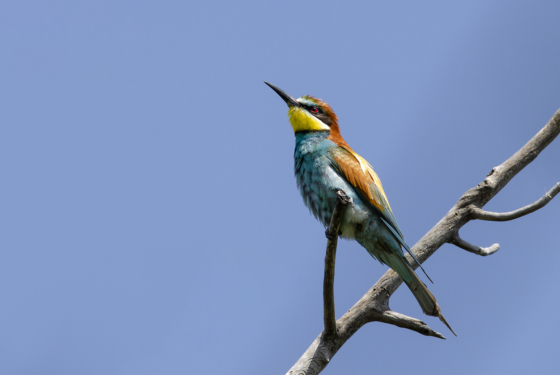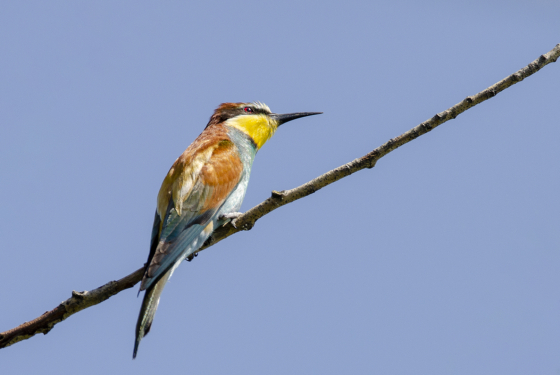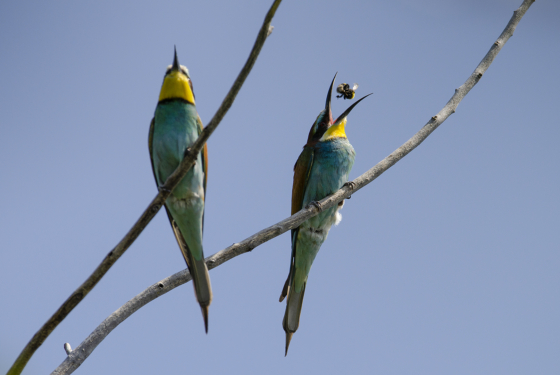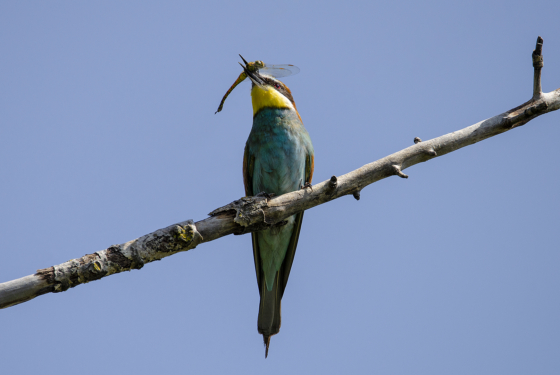European bee-eater
Latin: Merops apiaster
Order: Coraciiformes
Family: Meropidae
The European bee-eater breeds in southern Europe, parts of northwestern Africa, and western Asia. During the winter, these birds migrate to sub-Saharan Africa.
Often forming colonies, European bee-eaters engage in cooperative breeding, where colony members assist in feeding and caring for the young. They create nests by digging burrows into sandy banks or cliffs.
In Ukraine, the European bee-eater is a summer visitor and a breeding species. Arriving in late April to early May, they depart for their wintering grounds by September. These birds are found throughout most of the country, particularly in the southern and central regions. They favor areas with open landscapes such as steppes, river valleys, and agricultural lands.
As their name suggests, their primary diet consists of bees, wasps, and hornets, along with flying beetles, dragonflies, and cicadas. They catch insects in flight, in sorties from an open perch. The bird hits the caught insect on a hard surface and crushes it thoroughly to avoid being stung while swallowing.
